Tiki Central / Collecting Tiki
Tapa Cloth Repair
Pages: 1 13 replies
|
H
Haole'akamai
Posted
posted
on
Sat, Jan 10, 2009 2:34 PM
Okay, I searched for "Tapa repair" "Tapa repairing" "fixing Tapa" and "torn Tapa" and I couldn't find anything about repairing Tapa cloth. Did I miss the thread or shall we start one right here? I found a lamp with a shade made from Tapa cloth. It has small (less than 2") tears in a couple of places. How do I proceed with repairing it? Mahalo in advance. ~T |
|
T
teaKEY
Posted
posted
on
Sat, Jan 10, 2009 3:03 PM
tape from the back? |
|
T
tikiskip
Posted
posted
on
Sat, Jan 10, 2009 6:33 PM
pictures would help. You need to glue a strip of paper that matches the tear Then paint any markings on the fix to match. |
|
T
tikiskip
Posted
posted
on
Sat, Jan 10, 2009 6:49 PM
Go here to the botom of the page http://www.tikicentral.com/viewtopic.php?topic=26815&forum=1 |
|
A
AdOrAdam
Posted
posted
on
Wed, Feb 3, 2016 12:16 PM
This thread suits my needs perfectly if I can revive it! I recently got a 90 x 90 cm piece of tapa cloth:
It's definitely got thin patches & signs of wear all over - if you class it as 'only in as good a condition as the worst bit of it', it's in bad condition:
I figure this is normal for an vintage item. It's too delicate to glue to a wall & ever expect it to adjust it after your first attempt (ie it's going to a one shot take). It definitely won't come off again whole if you wished to move it. I figured the options are:
Assuming I'm keen to mount it (to retain the texture, allow it to be moved if required, etc), I'm wondering if the glue will show through, etc Any suggestions? |
|
T
tikiskip
Posted
posted
on
Wed, Feb 3, 2016 12:34 PM
"It's too delicate to glue to a wall & ever expect it to adjust it after your first attempt' Have not seen your Tapa, BUT Tapa is more like wood than paper. Put glue all over board, every inch. |
|
S
Swanky
Posted
posted
on
Wed, Feb 3, 2016 12:56 PM
I have glued a lot of tapa to walls using wall paper paste, but that stuff does not come in small packages I don't think. But I was doing whole walls. It would move a tiny bit, just enough to get out any pockets, but I worked hard to have none. And tapa isn't usually square, so depending on your purpose you may need to trim it. Once the first part is set, go back and look for any loose areas and glue them down from the front. You can paint behind the gaps to hide them. White areas with white, etc. It all has flaws. I only worried about major holes.
|
|
T
tikiskip
Posted
posted
on
Wed, Feb 3, 2016 1:06 PM
One more thing, the inks they use on Tapa are water soluble so they can run if wet. |
|
J

JenTiki
Posted
posted
on
Thu, Feb 4, 2016 6:50 AM
Holy crap, Swanky! Is that what the current Hapa Haole Hideaway looked like when you moved in, or was that the old one?!? I guess I forget just how much work goes into building a proper tiki bar, and of course yours is exceptional! |
|
A
AdOrAdam
Posted
posted
on
Sun, Mar 13, 2016 2:25 PM
So I debated how to attach the tapa cloth I had to the wall & contacted Cheeky Tiki for advice - this is as good a place as any to pass it on to people. They recommended gluing it to baton & attaching that to the wall (they also said it was a one shot thing). So I set out to do it:
I sprayed heavily with adhesive on the top edge of the tapa & back of the baton; then I weighted it down.
I drilled & attached the baton to the wall, I then smoothed/ stretched the tapa cloth back & forth until I was happy with it & pinned it to the wall. This is a damn near impossible task to get 100% flat if you've glued the tapa cloth slightly crooked (which I had, despite ironing the tapa & getting it as flat as possible when I stuck it) so I guess you're looking to get to a stage you are happy with. I then drilled & attached trim to the sides over the pins. One think I do advocate is Swanky's tip about 'gluing it down from the front' - the cloth had patches which were needing repair & they stuck down easy with a little water based glue. Here's a pic of the final wall:
Cheers! :) |
|
N''
nui 'umi 'umi
Posted
posted
on
Sun, Mar 13, 2016 3:54 PM
Well done, |
|
V
VampiressRN
Posted
posted
on
Sun, May 1, 2016 10:43 AM
This is a great thread I have a very large piece of tapa that I want to put on my ceiling so I'm wondering how you can hold it up on the ceiling while the glue dries. My ceiling is 14 ft high so will need scaffolding. I want a bamboo grid over it so figure the horizontal sticks can help to hold it. Will it be an issue if the ceiling surface is slightly textured.
[ Edited by: VampiressRN 2016-05-01 10:45 ] |
|
M
Mockingbird
Posted
posted
on
Tue, Aug 9, 2016 2:15 PM
Ok I have a few questions about Tapa cloth "etiquette" if there is such a thing. Not that any of these apply to anything I am currently doing but figured it might be good to know in the future as I head into building a home bar. First of (and I think this is where most of my questions stem from) is Tapa more of a product or a cultural artifact? IE should it be preserved or used? For instance, can/should you cut it to make a lamp or to fit it into an area or would that be a big no no? Or are there even 2 different kinds, one more cultural and one more intended for cutting an using? Not trying to ruffle any feathers just curious. Thanks. |
|
M
MaukaHale
Posted
posted
on
Tue, Aug 9, 2016 10:09 PM
I struggled in the beginning with that same question about preservation of Tapa cloth. The people at Oceanic Arts told me they use contact cement to attach it to the wall. This definitely destroys the tapa since it doesn't come off the wall. I soon found out that there are deferent qualities of tapa. There are lot of pieces that are what I would call tourist tapa. These are mostly Fijian Masi and Tonga pieces. The small pieces at Oceanic Arts that are under $100 are in this category. These pieces are great for cutting up and making lamp shades. I also have used spray glue to attach pieces to foam core board to mount on the ceiling. I bought a 12 foot section from Oceanic Arts that came off of a 120 foot role. I had no guilt cutting this piece to fit the entire wall. These long rolls where made to be cut into sections to be given as gifts. I did preserve the piece on the wall by attaching it with steel harden picture hanger nails. i have also preserved other pieces of tapa by pressing them between a frame and foam core board. If you are not paying hundreds of dollars for the tapa its probably not a vintage or museum quality piece of tapa. If you want to see what I did with tapa you can go to: http://www.tikicentral.com/viewtopic.php?mode=viewtopic&topic=42941&forum=20&start=30 |
Pages: 1 13 replies

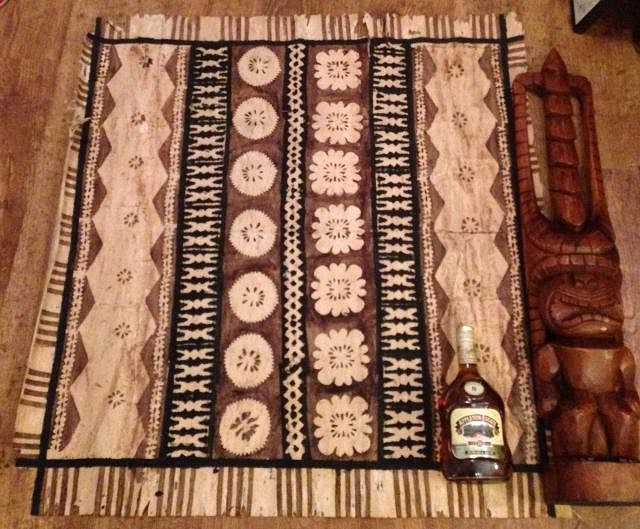
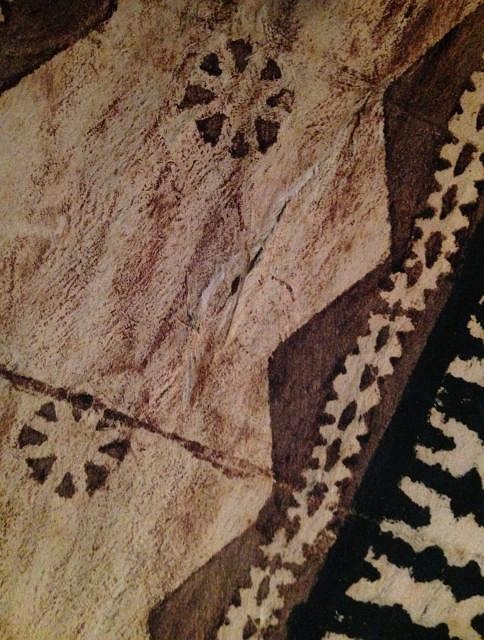
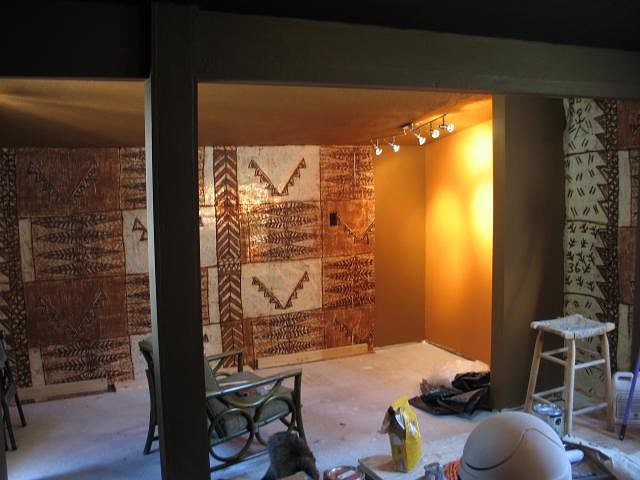
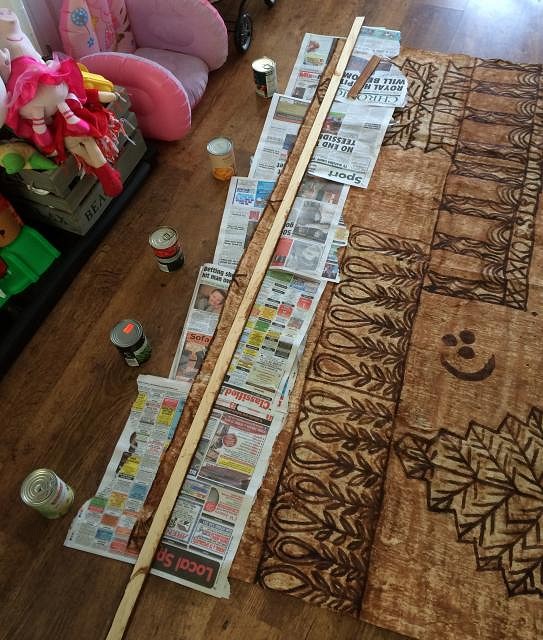
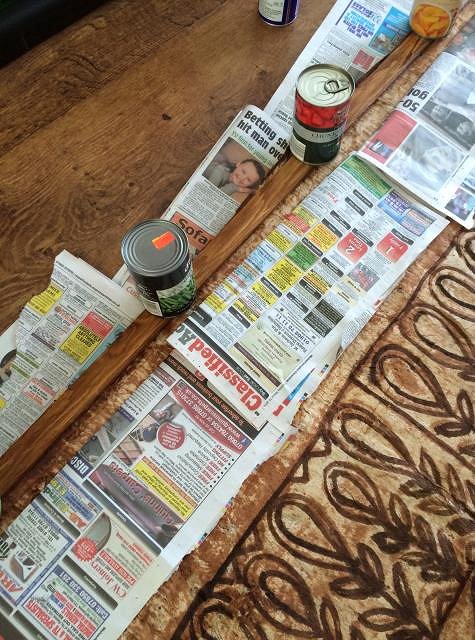
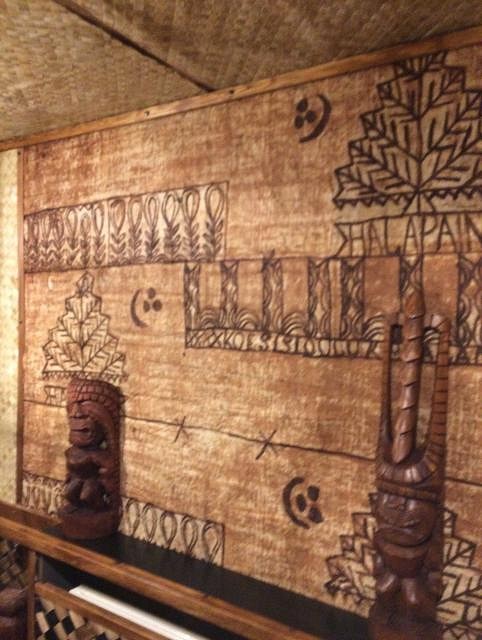
 "Oh waiter, another cocktail please!!!"
"Oh waiter, another cocktail please!!!"